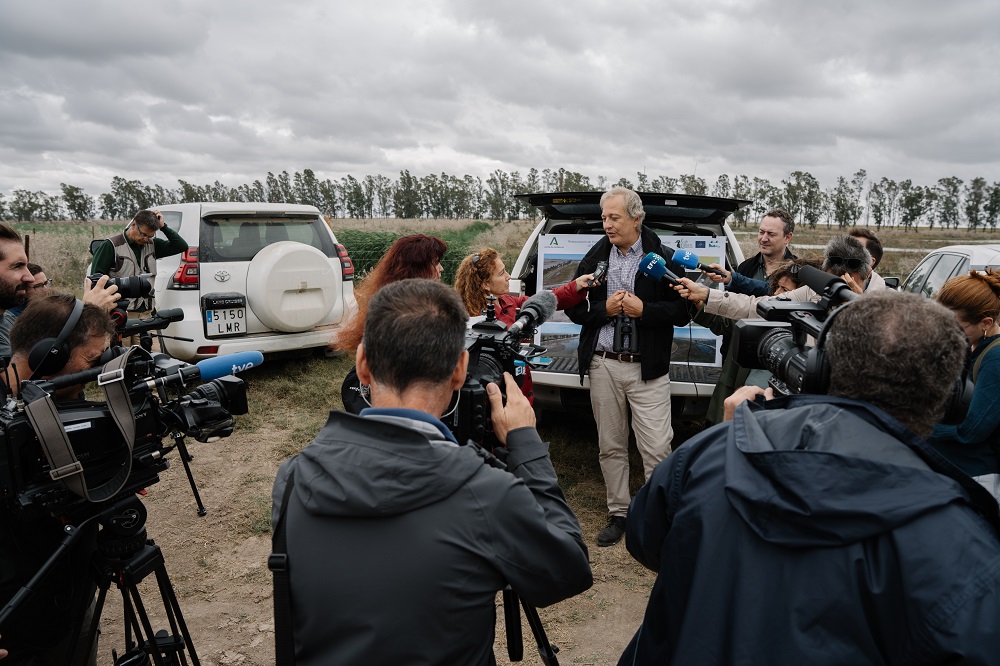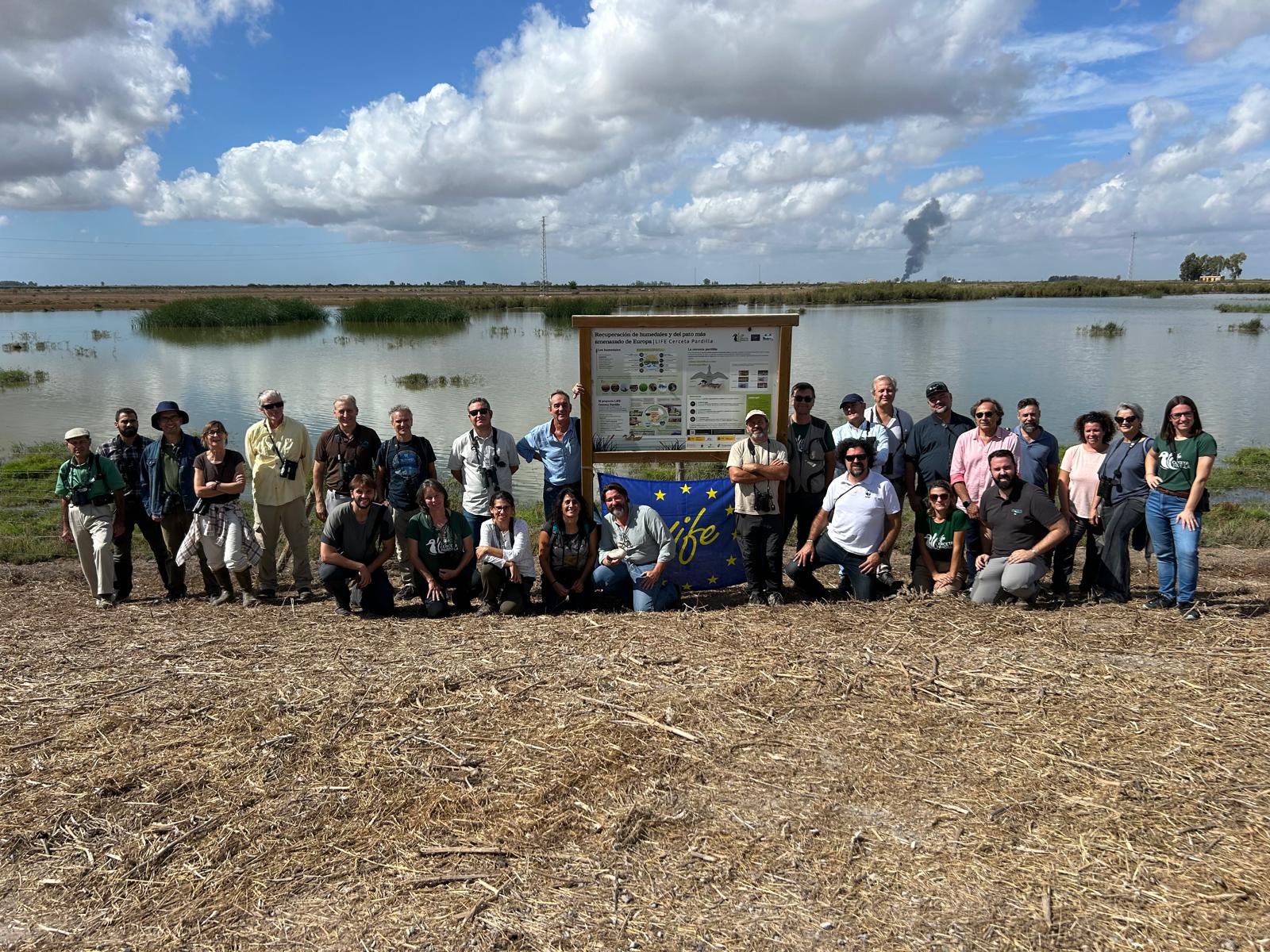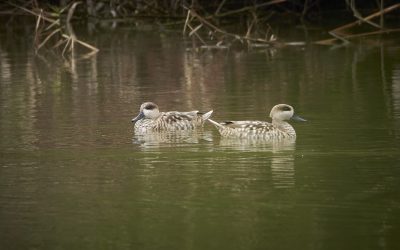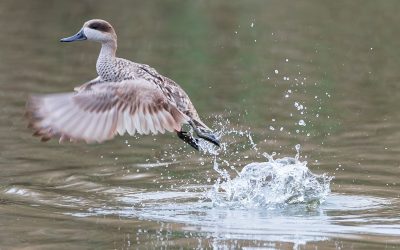We have held the third meeting of the advisory committee of the LIFE Marbled Teal project, a technical and scientific consultative body whose function is to inform and advise the project and evaluate specific technical and socio-economic aspects of its implementation. The committee is composed of various sectors: irrigators, livestock farming, aquaculture, hunting, administration, NGOs, and research.
On this occasion, the meeting took place on October 8 at the Brazo del Este Natural Site, in the province of Seville, a critical wetland for the conservation of the marbled teal, where the Andalusian Regional Government has carried out habitat improvement actions as part of the project.
The event had a dual objective: on the one hand, to showcase the results of these actions, and on the other, to discuss the aspects to be considered for the upcoming update of the “Best Practices Guide for Marbled Teal Habitat Management.” Additionally, participants learned about the hydraulic management interventions carried out under the stewardship agreement signed with livestock farmer Pedro Manenti, who holds the grazing rights in the area. These actions enable controlled flooding for the benefit of both cattle and the marbled teal. As a result of all these efforts, in 2024, the presence of a female with four ducklings was confirmed in the specific area under restoration.
The committee had 28 attendees, including representatives from the scientific sector, regional administration, managers of protected natural areas, and the livestock and hunting sectors.
PRESS VISIT
The day after the advisory committee meeting, journalists from national and regional media had the opportunity to learn about the project’s progress, particularly the actions carried out in Andalusia and at the Brazo del Este Natural Site. They also attended the release of 10 individuals from the species’ captive breeding program and received information about this program, as well as the tagging and satellite tracking initiatives.

The Deputy Director of Biodiversity and Climate Change of the Biodiversity Foundation of MITECO, Ignacio Torres, with the media attending the conference.
During the visit, the Director General of Forestry Policy and Biodiversity of the Junta de Andalucía, Juan Ramón Pérez Valenzuela, the head of the Terrestrial Fauna area of the Directorate General of Biodiversity, Forests and Desertification of the MITECO, Borja Heredia, and the Deputy Director of Biodiversity and Climate Change of the Biodiversity Foundation of the MITECO and director of the project, Ignacio Torres, took part in the visit.
THE LIFE CERCETA PARDILLA PROJECT
LIFE Cerceta Pardilla aims to improve the conservation status of 3,000 hectares of wetlands to reverse the risk of extinction of Europe’s most endangered duck, which is in a critical situation in Spain. To this end, it has undertaken a series of actions to reinforce the state of its populations in the natural environment, improve the state of the wetlands and scientific knowledge of the species.
The project, which is coordinated by the Biodiversity Foundation of the Ministry for Ecological Transition and the Demographic Challenge, involves as partners the Ministry itself, through the Segura Hydrographic Confederation and Tragsatec; the Regional Government of Andalusia, through the Department of Sustainability and Environment, and the Environment and Water Agency M.P.; the Regional Government of Valencia; the Government of the Region of Murcia, as well as the organisations SEO/BirdLife and ANSE. It is supported by the LIFE Programme of the European Union and the Directorate General for Water.




